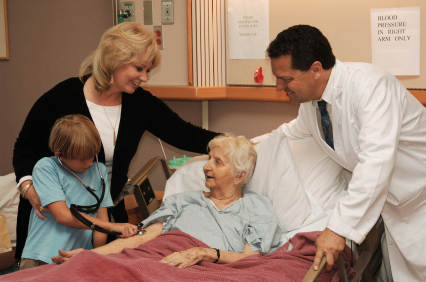 Bedsores are also known as pressure sores or pressure ulcers. They are a type of injury which is inflicted on both the skin and the layers of tissue which reside underneath it. Bedsores come as a result of prolonged pressure on a specific area of skin. Since they are caused by pressure, bedsores are often present on the bony areas of the body which do not absorb pressure as well. The buttocks, hips, heels and ankles are all common locations for bedsores to be present.
Bedsores are also known as pressure sores or pressure ulcers. They are a type of injury which is inflicted on both the skin and the layers of tissue which reside underneath it. Bedsores come as a result of prolonged pressure on a specific area of skin. Since they are caused by pressure, bedsores are often present on the bony areas of the body which do not absorb pressure as well. The buttocks, hips, heels and ankles are all common locations for bedsores to be present.
Bedsores are most prevalent in individuals who cannot move freely and may remain in the same position for a long period of time. In the nursing home setting, bedsores are a common problem. However, although many nursing home residents have mobility issues, the risk of these individuals developing bedsores can be limited by proper behavior on the part of nursing home staff.
The Causes of Nursing Home Bedsores
The fundamental cause of bedsores is a lack of blood flow to the skin and underlying tissues. Sustained pressure on an area of the skin prevents blood from flowing to that area. However, there are contributing factors that will make an individual more susceptible to developing bedsores.
The contributing causes of bedsores include:
Constant Pressure: If the pressure between and individual’s skin and a surface like a wheelchair is greater than the pressure of blood flowing through capillaries, blood will fail to reach the cells in the pressurized area. As a result, the skin and tissues in the pressurized region will receive less oxygen and nutrients. Eventually, the cells in the pressurized area will die.
Shear: Shear takes place when one surface moves while the other one stays still. Shear incidents commonly involve a patient that is lying down on a hospital bed. If the head of the bed is raised while the person is lying down, their upper body may sink down the bed while their skin remains in place. This can cause the skin to stretch and may result in damage to blood vessels and tissues, thus making the area more vulnerable to damage caused by pressure.
Friction: As skin ages, it becomes more susceptible to damage and slower to heal. In the case of elderly individuals with vulnerable skin, friction may cause significant damage and lead to bed sores. Friction may take place if a nursing home resident has mobility issues. He or she may be dragged or carried by nursing home staff members in order to be repositioned or helped with daily tasks. Lack of proper care by nursing home employees may increase the likelihood of a bedsore brought on by friction damage.
Preventing Nursing Home Bedsores
Bedsores are prevalent in the elderly and in those with limited mobility. Nursing home facilities often house many individuals that meet this description. As a result, it is necessary for nursing home staff to follow procedures aimed at limiting bedsore risk, as well as treating residents who already have bedsores.
The most common technique used to help avoid bedsores is repositioning. Repositioning helps to alleviate sustained pressure in common high-pressure areas of the body. Nursing home staff should encourage residents in wheelchairs to reposition themselves every 15 minutes, as well as help these individuals to reposition themselves every hour. Additionally, residents who are confined to a hospital bed should be repositioned by staff at least every two hours.
Nursing Home Bedsore Lawsuits
Lawsuits that involve bedsores often center on negligence on the part of nursing home staff. It is necessary for staff to regularly reposition immobilized residents in order to limit their risk of developing bedsores. Therefore if the staff fails to rotate a resident on a regular basis, this may be considered neglect. The nursing home may be liable for any bedsores that this individual subsequently suffers. Often, the decision to file a bedsore-related negligence lawsuit is made with the help of a qualified attorney.
Sources:
Schaffer, Amanda. “Fighting Bedsores With a Team Approach.” New York Times 19 2 2008, n. pag. Web. 24 May. 2013. <http://www.nytimes.com/2008/02/19/health/19sore.html?pagewanted=all&_r=0>.
Staff, Mayo Clinic. “Bedsores.” Mayo Clinic, 19 3 2011. Web. 24 May 2013. <http://www.mayoclinic.com/health/bedsores/DS00570/DSECTION=treatments-and-drugs>.
Yoshikawa, Thomas, Nigel Livesley, and Anthony Chow. “Infected Pressure Ulcers in Elderly Individuals.” Clinical Infectious Diseases. 35.11 (2002): 1390-1396. Print. <http://cid.oxfordjournals.org/content/35/11/1390.full>.
